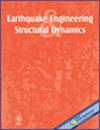Post-tensioned self-centering (PTSC) structures that use PT tendons to assemble precast members and provide structural resistance have demonstrated superior seismic performance and self-centering capacity. Current PTSC frames generally serially connect all beams in a floor. This assembly method would induce interferences among different spans and increase the risk of progressive failure once local damage occurs in a bay. This paper proposes a new type of PTSC joint to avoid such serial connection of beams. By employing steel beams to serve as the anchorages of PT tendons, each bay of the frame is separately prestressed. The composite prestressed beams can be readily fixed to columns by high-strength bolts, hence facilitating the construction of such separately-anchored self-centering (SASC) frame building. External friction dampers are installed to enhance the energy dissipation capacity of SASC connections. Eight full-scale cyclic loading tests are performed to compare the performance of the new SASC connections with conventional PTSC joints and also comprehensively evaluate the seismic behavior of SASC connections with different parameters. The test results validate the excellent damage mitigation abilities of both types of connections while the superior mechanical performance of the new SASC connections. In addition, the effects of key design parameters such as initial prestress level, damper force, and tendon number on the seismic behavior of the SASC connection are evaluated, and design recommendations for the application of the proposed precast beam-column connection are also provided.


